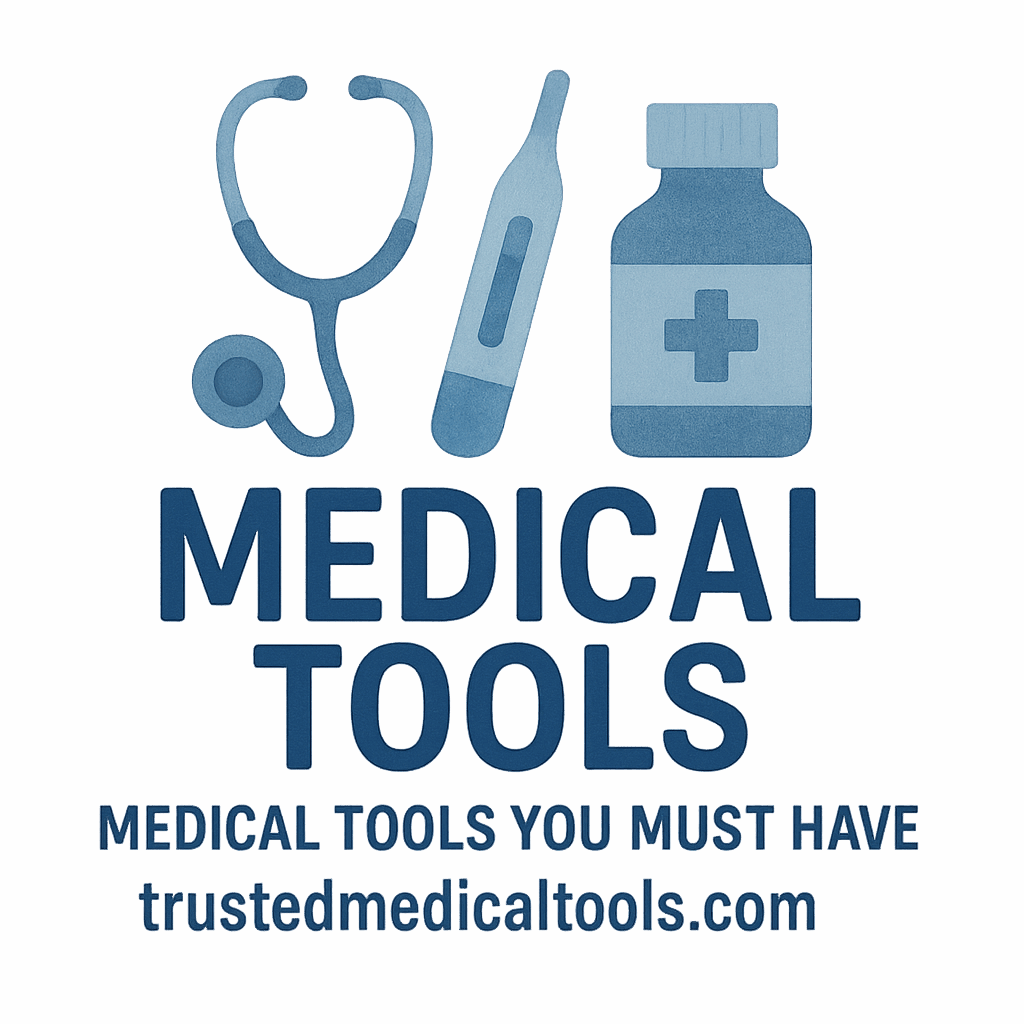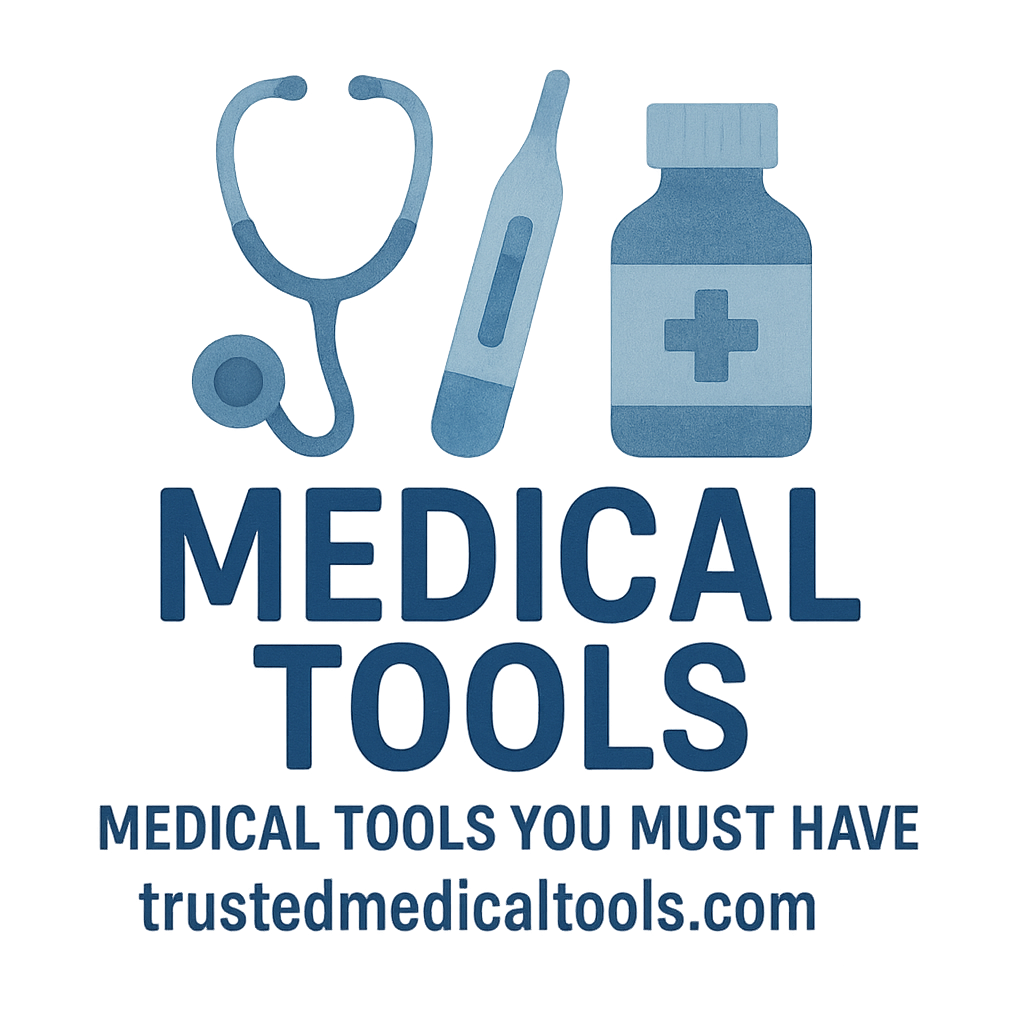Introduction: The Importance of a Well-Stocked First Aid Box
A well-stocked first aid box is a must-have for any household. From minor scrapes and cuts to more serious injuries, having the right medical tools on hand can help you manage health emergencies efficiently and safely. Having these tools can help reduce the risk of infection, ease pain, and promote quicker recovery.
In this article, we’ll explore the 7 essential medical tools that should be in every home first aid box. These tools will help you handle common health issues, ensuring that you are prepared in case of an emergency. So, let’s dive in!
1. Thermometer: Essential for Monitoring Body Temperature
A thermometer is crucial for monitoring body temperature when someone falls ill. Whether it’s a fever, cold, or flu, taking an accurate temperature can guide you in making informed decisions about treatment.
Why Every Household Needs a Thermometer
A thermometer helps you assess whether an illness might require medical attention. Knowing the body’s temperature is especially important in the case of children or elderly family members, where fever can signal a serious issue.
Types of Thermometers: Which One to Choose?
When selecting a thermometer, you have several options to choose from: digital, ear, and forehead thermometers. Digital thermometers are the most widely used, known for their ease of use and accuracy. Ear thermometers are faster, especially for kids, and forehead thermometers are non-invasive, ideal for quick readings without causing discomfort.
For precise monitoring, opt for a reliable digital thermometer. It’s an essential part of home essentials.
2. Bandages and Gauze: For Wound Protection and Healing
Bandages and gauze are basic first aid supplies. They play a crucial role in covering wounds, stopping bleeding, and preventing infection, making them indispensable in every first aid box.
Why Bandages and Gauze Are Non-Negotiable in First Aid
Cuts, scrapes, or any injury with open skin needs to be covered to avoid contamination. Bandages and gauze prevent dirt and bacteria from entering the wound, significantly lowering the risk of infection.
Choosing the Right Bandages and Gauze for Your Needs
Different types of bandages serve different purposes. Adhesive bandages are suitable for small cuts or abrasions, while sterile gauze is ideal for larger wounds. Always keep a variety of bandages, including fabric bandages for flexibility, in your first aid kit.
For more guidance on medical tools and supplies, check out our buying guide.
3. Antiseptic and Disinfectants: Preventing Infection
Antiseptics and disinfectants are key to keeping wounds clean and preventing infection. These products kill bacteria and stop infections from spreading.
The Importance of Antiseptics in First Aid
Using an antiseptic to clean a wound before applying a bandage or gauze is one of the most effective ways to prevent infections. Antiseptics act as a barrier against bacteria and viruses, ensuring faster and safer healing.
Different Types of Disinfectants for Home Use
There are several antiseptics you can choose from, including alcohol-based solutions, hydrogen peroxide, and iodine tincture. Each has its specific uses, but it’s important to choose the right one for the type of wound and skin sensitivity. For sensitive skin, consider a gentler option, such as iodine or a mild antiseptic solution.
Learn more about disinfecting your environment and maintaining health safety with home care products.

4. Pain Relief Medications: Managing Pain Safely at Home
Pain relief medications are essential for managing minor injuries or discomfort. They help alleviate pain, reduce inflammation, and lower fevers.
Common Pain Relief Medications You Should Have
Ibuprofen, acetaminophen, and aspirin are commonly used in households for pain relief. They can treat a range of conditions, from headaches and muscle pain to fever and inflammation. Having these on hand can make managing pain at home easier and more effective.
How to Safely Use Pain Relief Medications
When using pain relief medications, always follow the recommended dosages and be cautious, especially with children. Ensure that your first aid kit contains medications suited for all family members and consult a doctor for any specific health concerns.
For more information on doctor-approved medications, visit our doctor-approved tools section.
5. Medical Scissors and Tweezers: For Precise Care
Precision is critical when dealing with first aid, and medical scissors and tweezers help achieve that. Whether you’re cutting gauze or removing splinters, these tools ensure you provide care without causing further harm.
Why Precision Matters in First Aid
Medical scissors are designed for cutting through bandages and clothing without causing damage to the skin, while tweezers are perfect for removing small foreign objects such as splinters, glass, or ticks.
How to Choose the Right Scissors and Tweezers
Opt for stainless steel medical scissors that are durable and easy to sterilize. Tweezers should have fine, pointed tips for precision. Both tools should be part of your medical tools collection for effective and safe care.
6. Adhesive Tape: For Securing Bandages and Dressings
Adhesive tape is essential for securing bandages and dressings in place, ensuring that they don’t shift or come off, especially in active or awkward body parts.
Why Adhesive Tape is a Must-Have First Aid Essential
Without proper adhesive tape, gauze or bandages might shift or fall off, leading to a lack of protection. The right tape will hold dressings securely, preventing the wound from being exposed to bacteria and dirt.
Different Types of Adhesive Tape for Various Purposes
Adhesive tapes come in various forms—fabric, paper, and waterproof tapes. Fabric tape is ideal for joints and moving parts, paper tape works well for sensitive skin, and waterproof tape is essential when dealing with areas exposed to water.
Make sure to check out our health equipment page for more info on adhesives and other first aid supplies.
7. Cold and Heat Packs: Managing Swelling and Pain
Cold and heat packs are simple but effective tools for managing swelling, pain, and injuries like sprains and strains.
The Benefits of Cold and Heat Packs in First Aid
Cold packs reduce swelling and numb the area, while heat packs can help improve blood circulation and relax muscles. Whether you’re treating a bruise or a sore muscle, cold and heat packs can make a big difference.
How to Use Cold and Heat Packs Effectively
Cold packs should be applied for 15-20 minutes at a time to avoid tissue damage. Heat packs can be used for longer periods but should not be applied directly to the skin—always wrap them in a cloth. For more details on using these packs, check out our monitoring devices section for insights on pain management tools.
Conclusion: Building a Comprehensive First Aid Box
Having these seven essential medical tools in your first aid box will ensure you’re prepared to handle minor injuries and health concerns effectively. A well-organized first aid kit can save you time and reduce panic during emergencies, making it an invaluable asset in any home.
Regularly check your kit to ensure all items are in good condition and replace anything that’s expired or used. With these essential tools, you can manage a wide range of injuries and illnesses safely and efficiently.
For more detailed information on first aid products, visit our family care section.
Frequently Asked Questions (FAQs)
- What other items should I include in my first aid kit?
In addition to the seven essentials mentioned, consider adding a first aid box guide, gloves, burn cream, allergy medications, and a CPR face shield. - How often should I replace items in my first aid kit?
It’s a good idea to check your kit every 6 to 12 months to ensure everything is in working order and nothing is expired. Be sure to update it after using any items. - Can I use expired medications in my first aid kit?
It’s not advisable to use expired medications as they may lose their effectiveness or cause harm. Always check the expiration dates regularly. - Are there any alternatives to traditional bandages?
Yes! You can use DIY health check kits or hydrocolloid dressings for certain types of wounds. - Can I store my first aid kit in the bathroom?
It’s best to store your first aid kit in a cool, dry place, away from heat and moisture, as excessive humidity can damage medical supplies. - How can I treat a burn at home?
For minor burns, rinse with cool water, apply burn ointment, and cover with sterile gauze. For more severe burns, seek medical help immediately. - Should I include over-the-counter medications in my first aid kit?
Yes! Keep OTC medications like antihistamines, pain relievers, and cold medicines in your kit, but consult a healthcare professional if you have any concerns.


